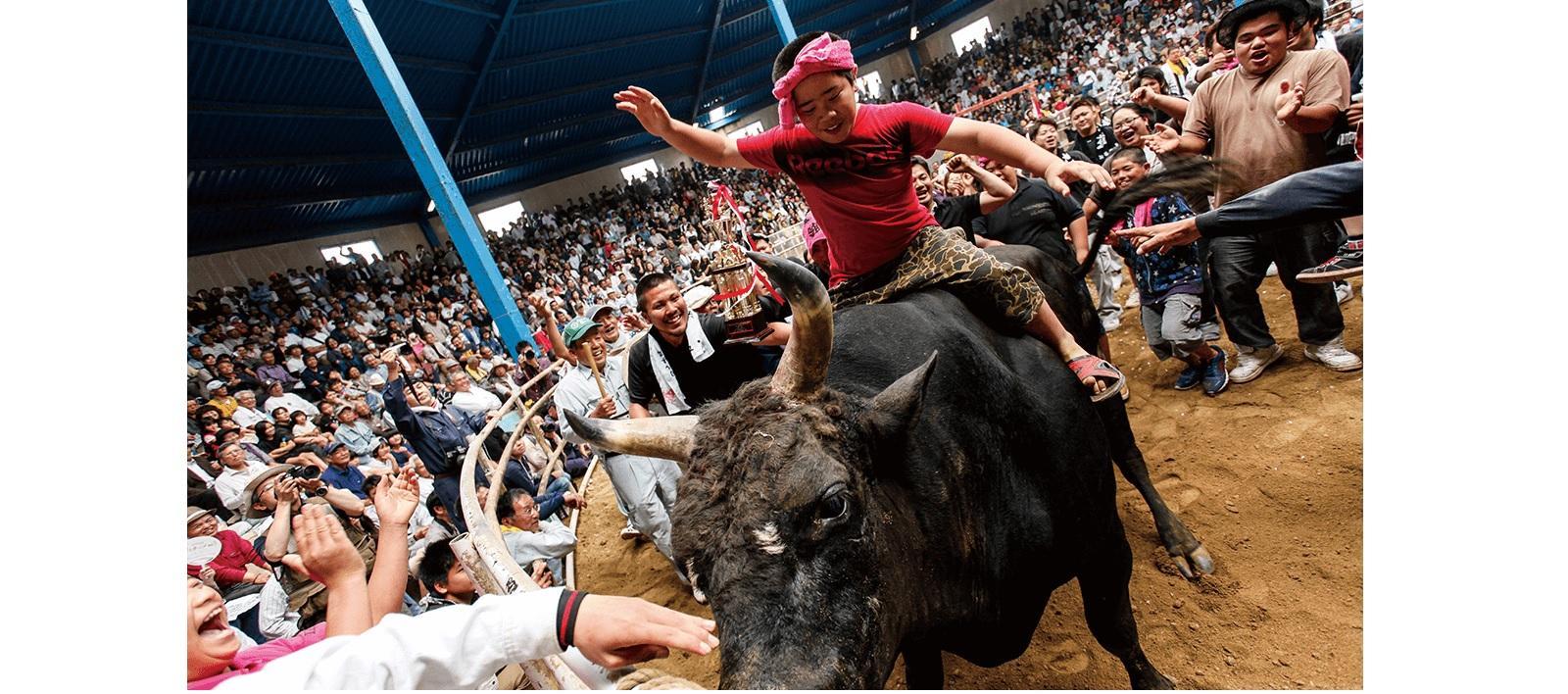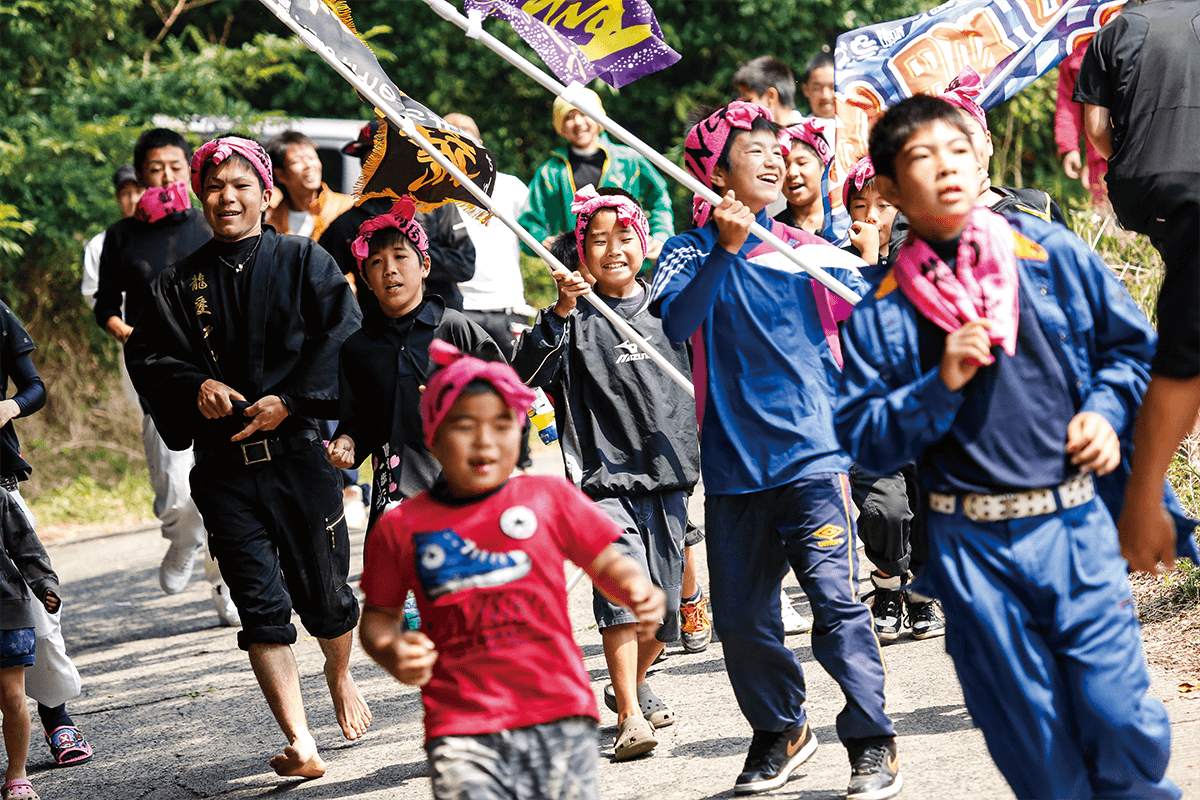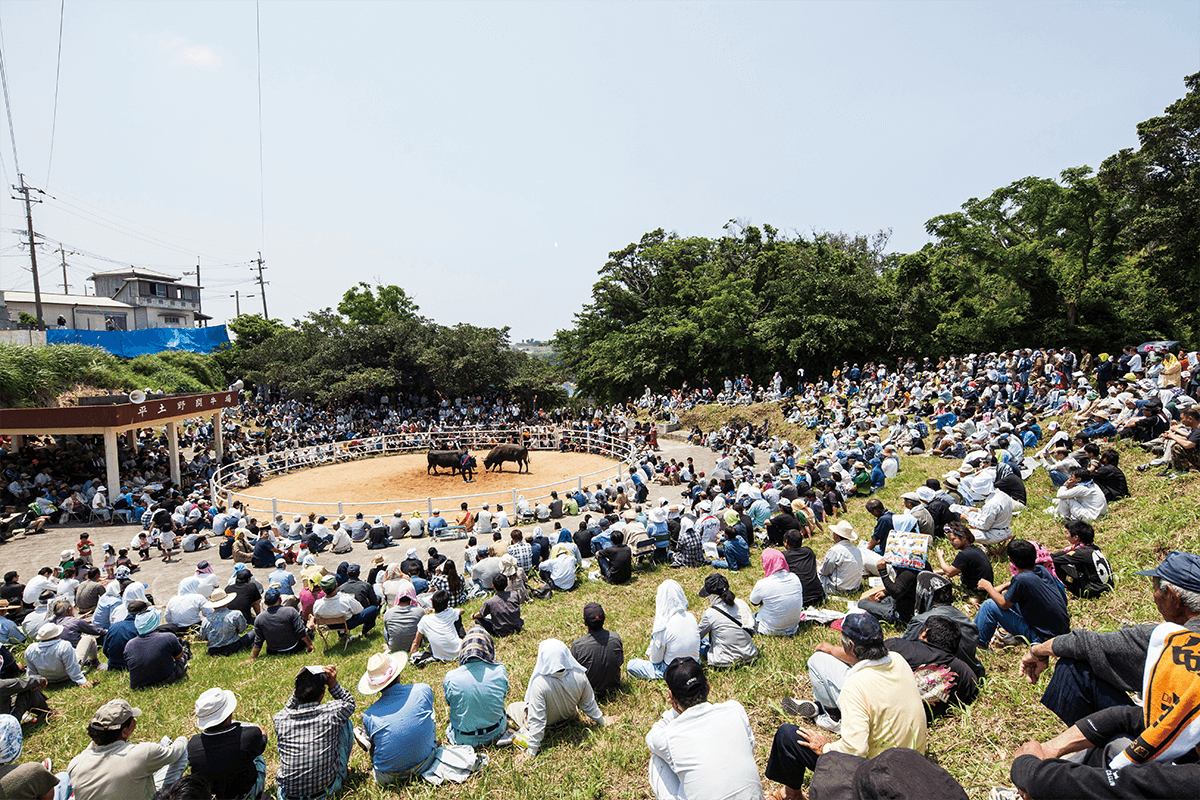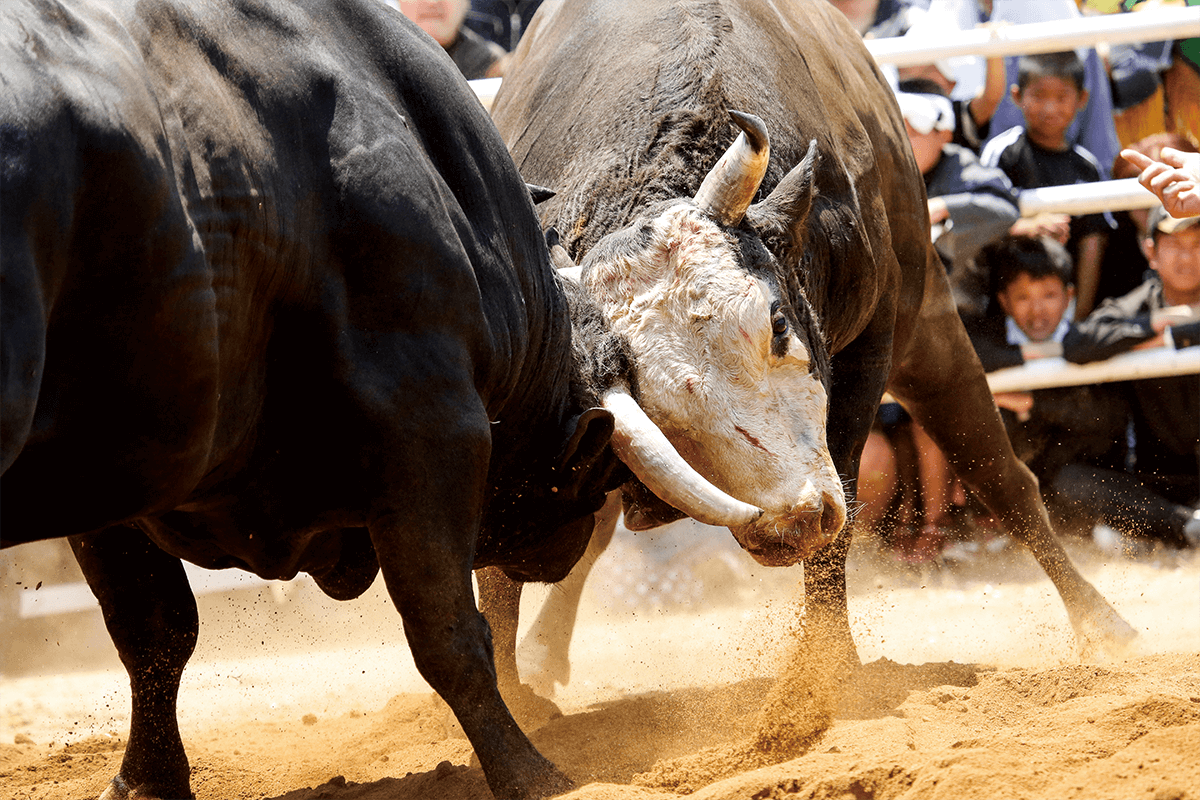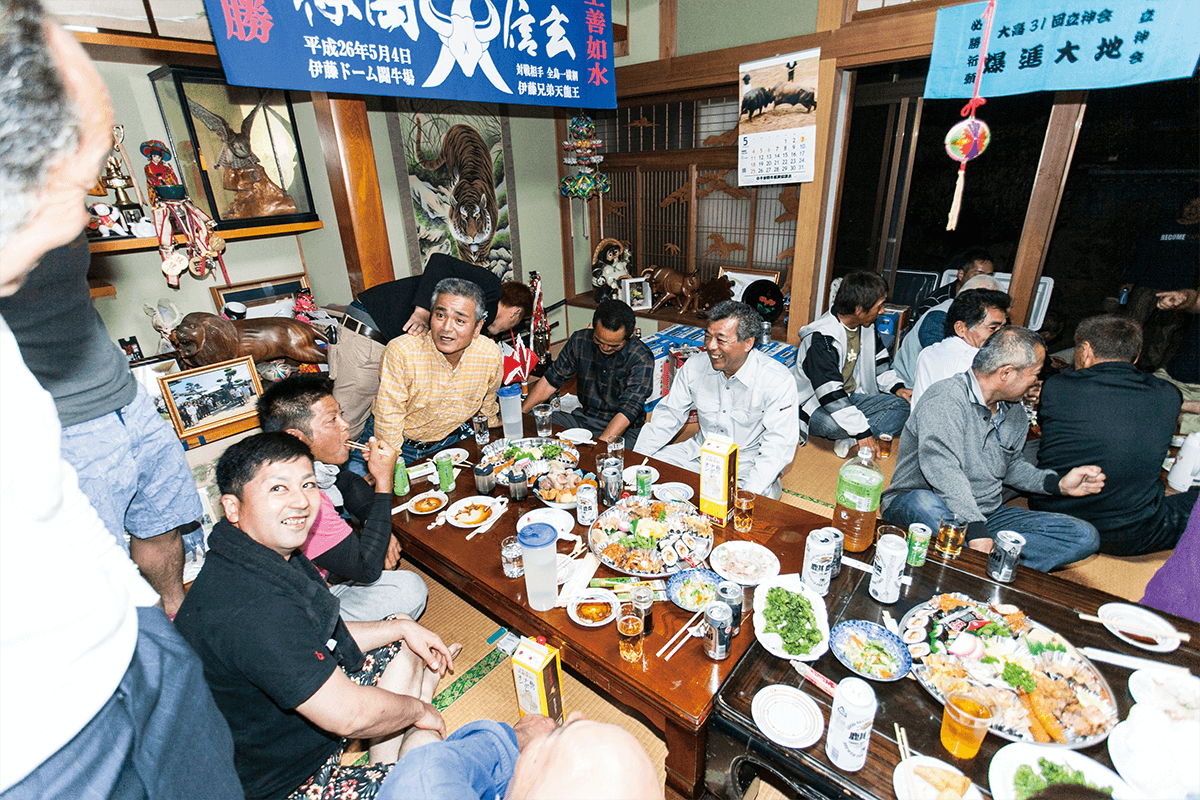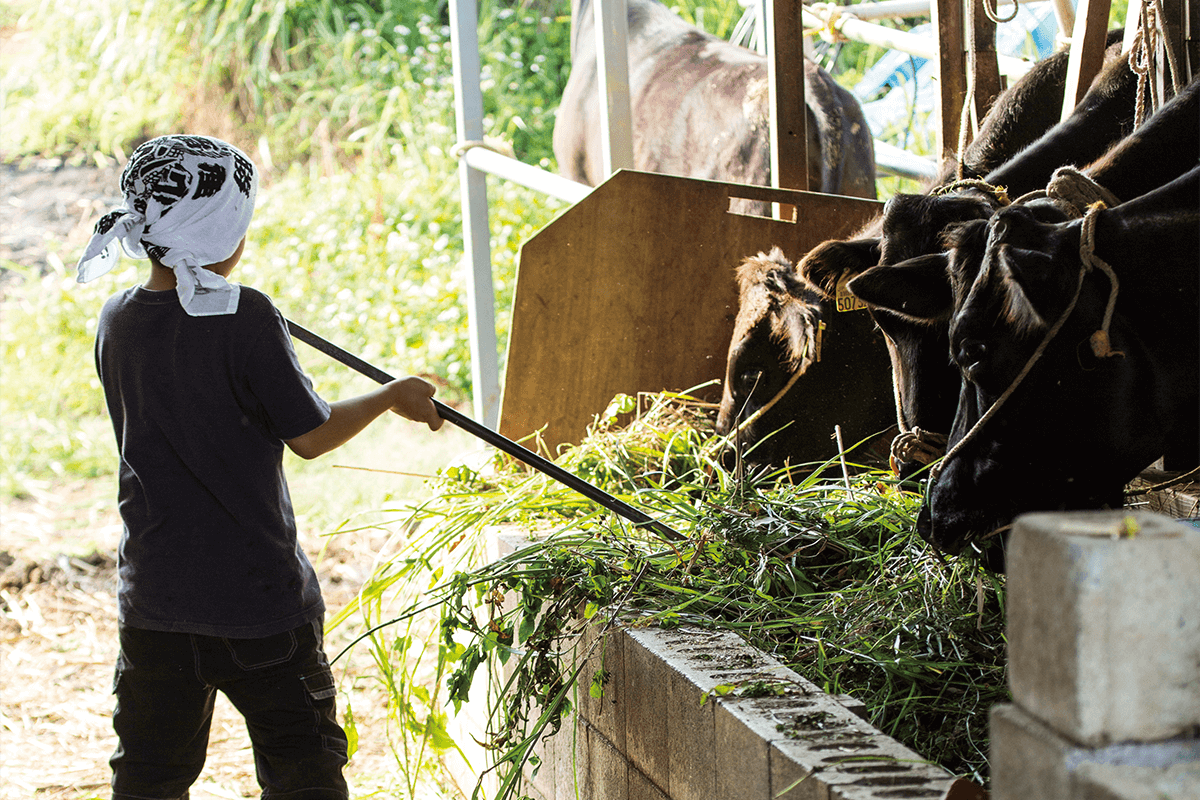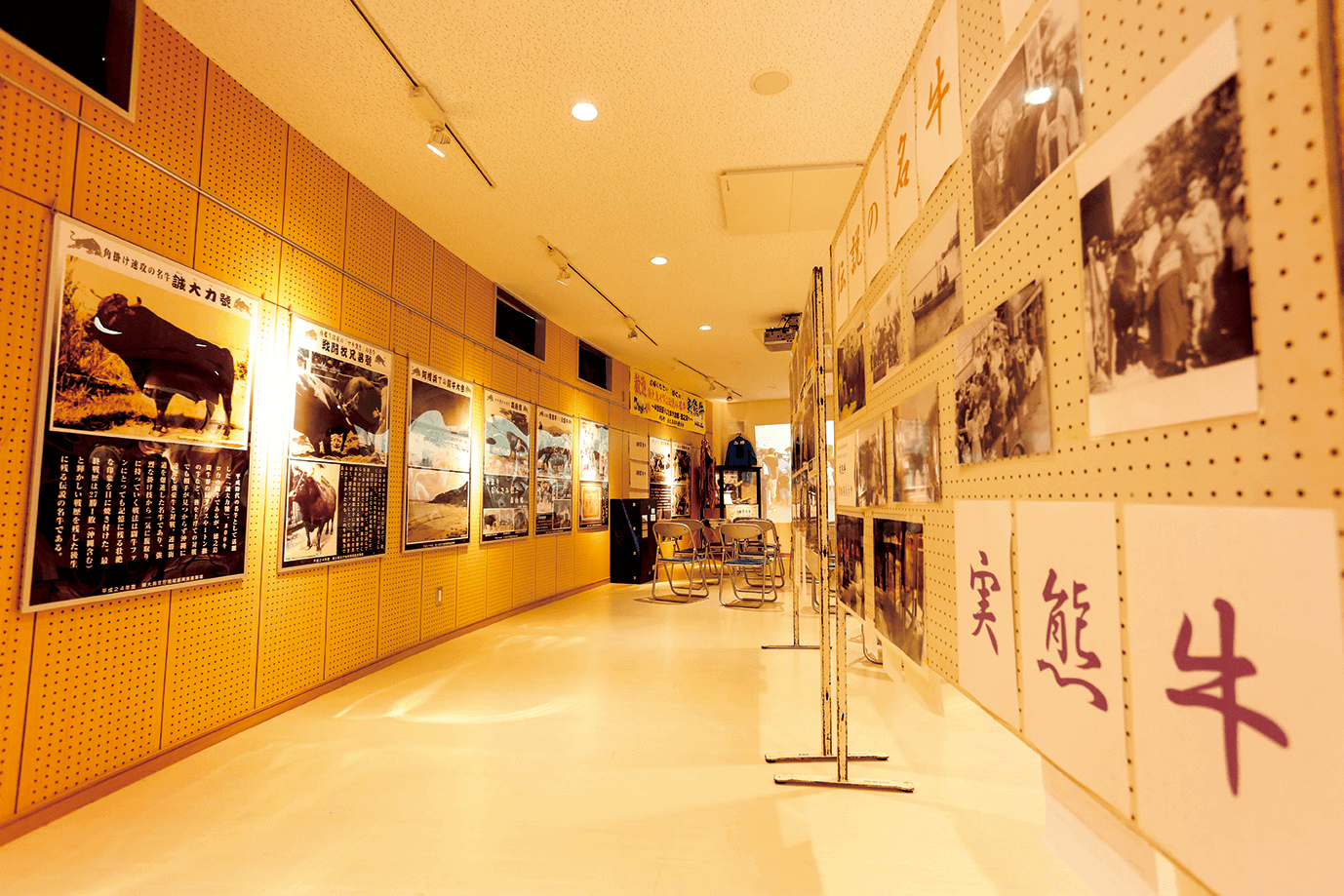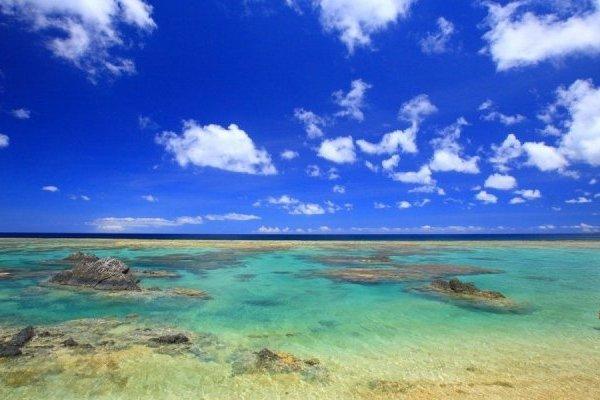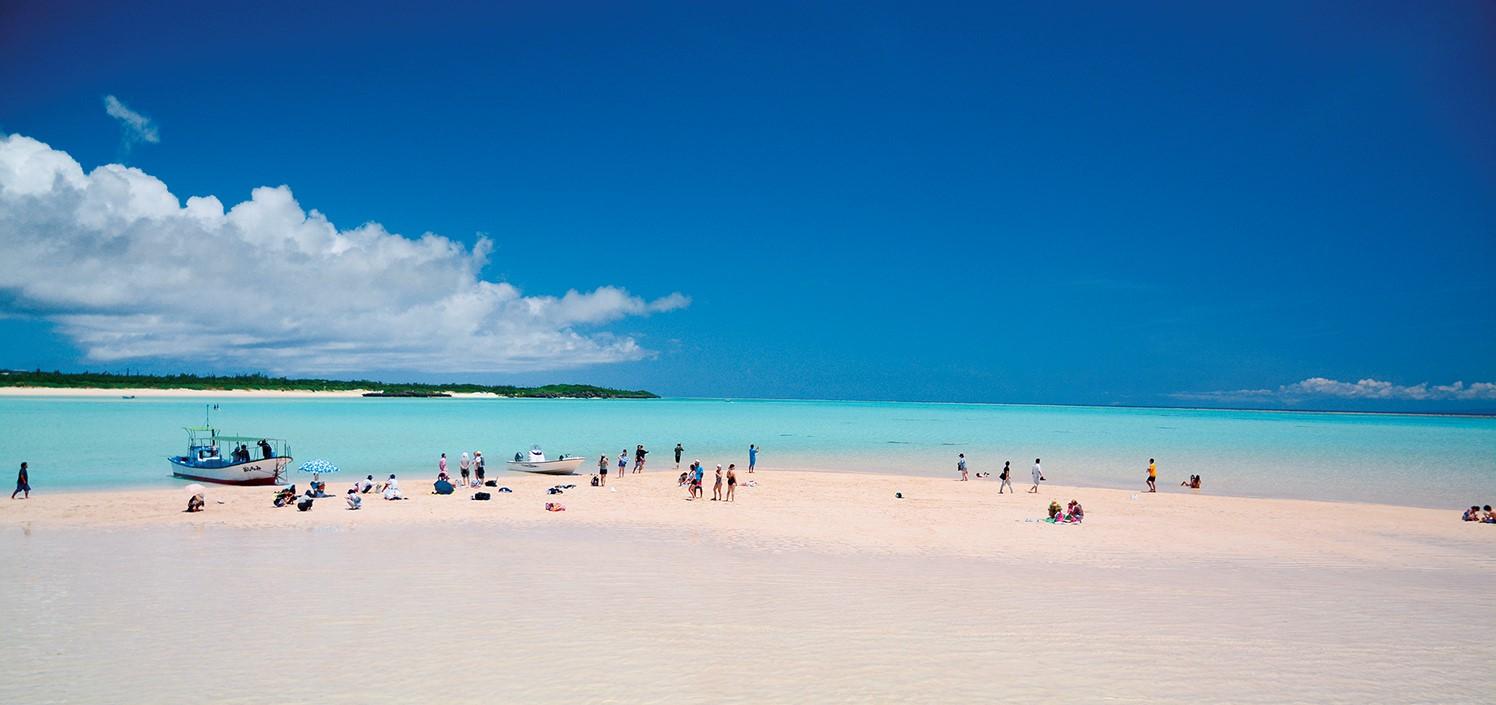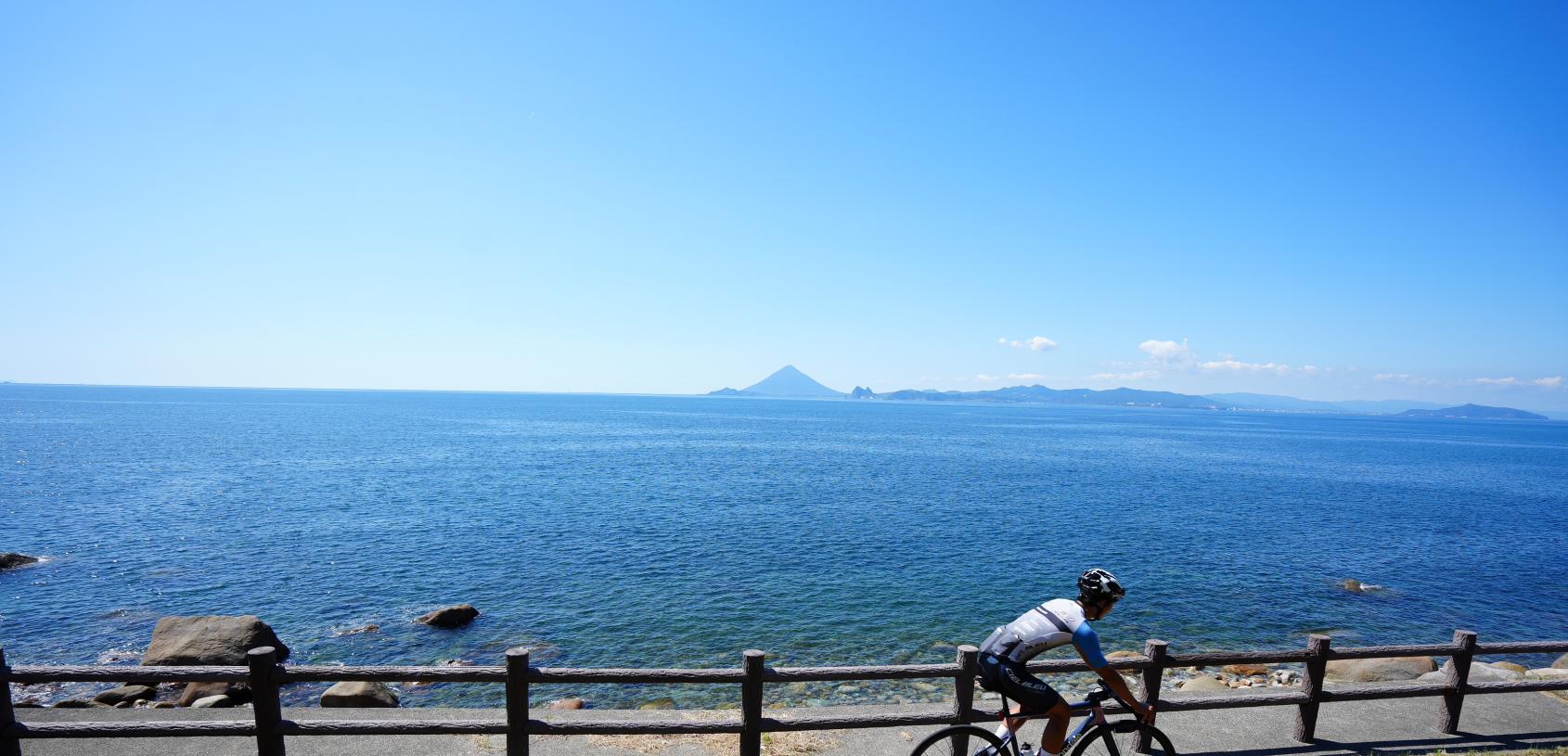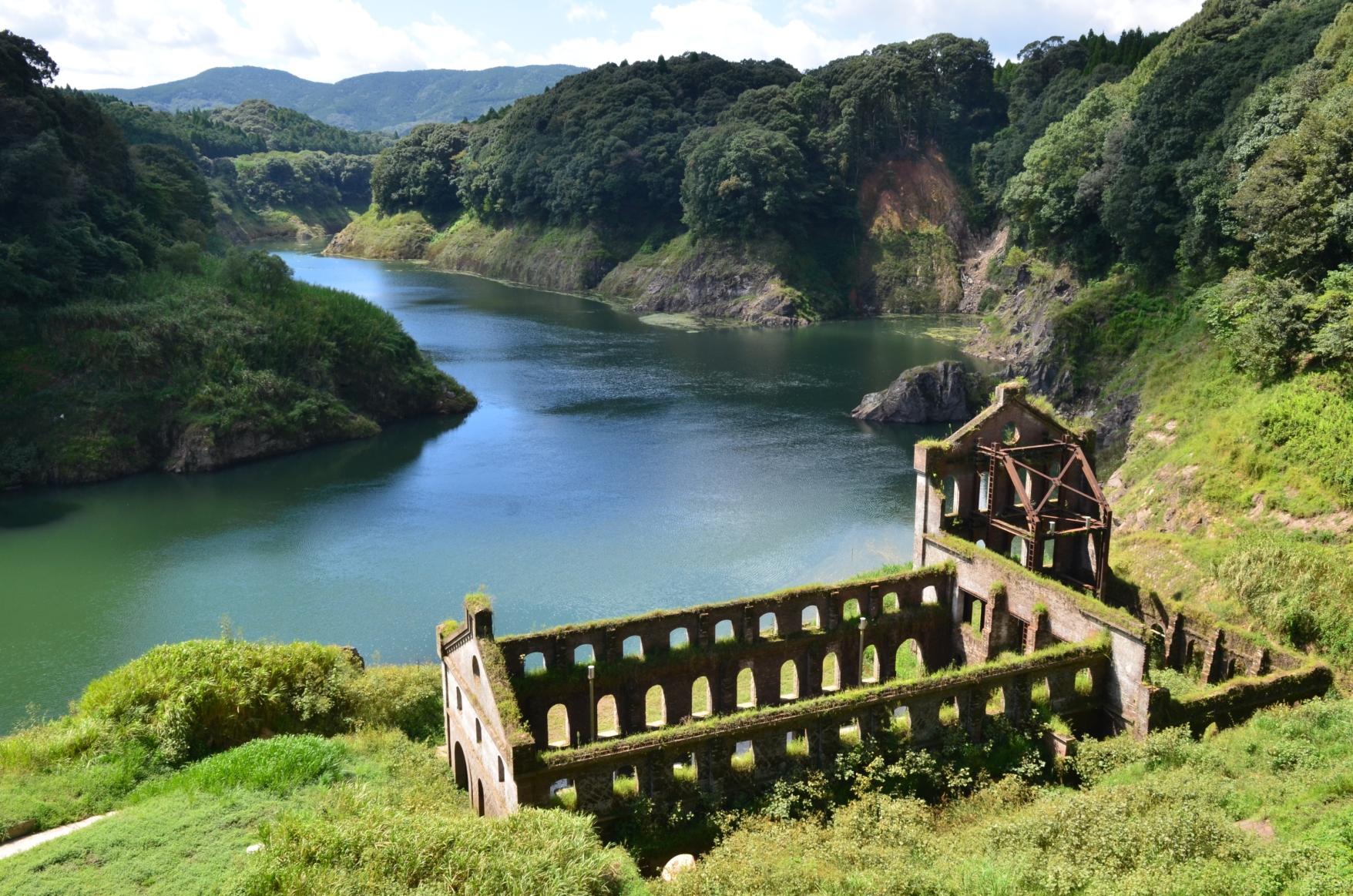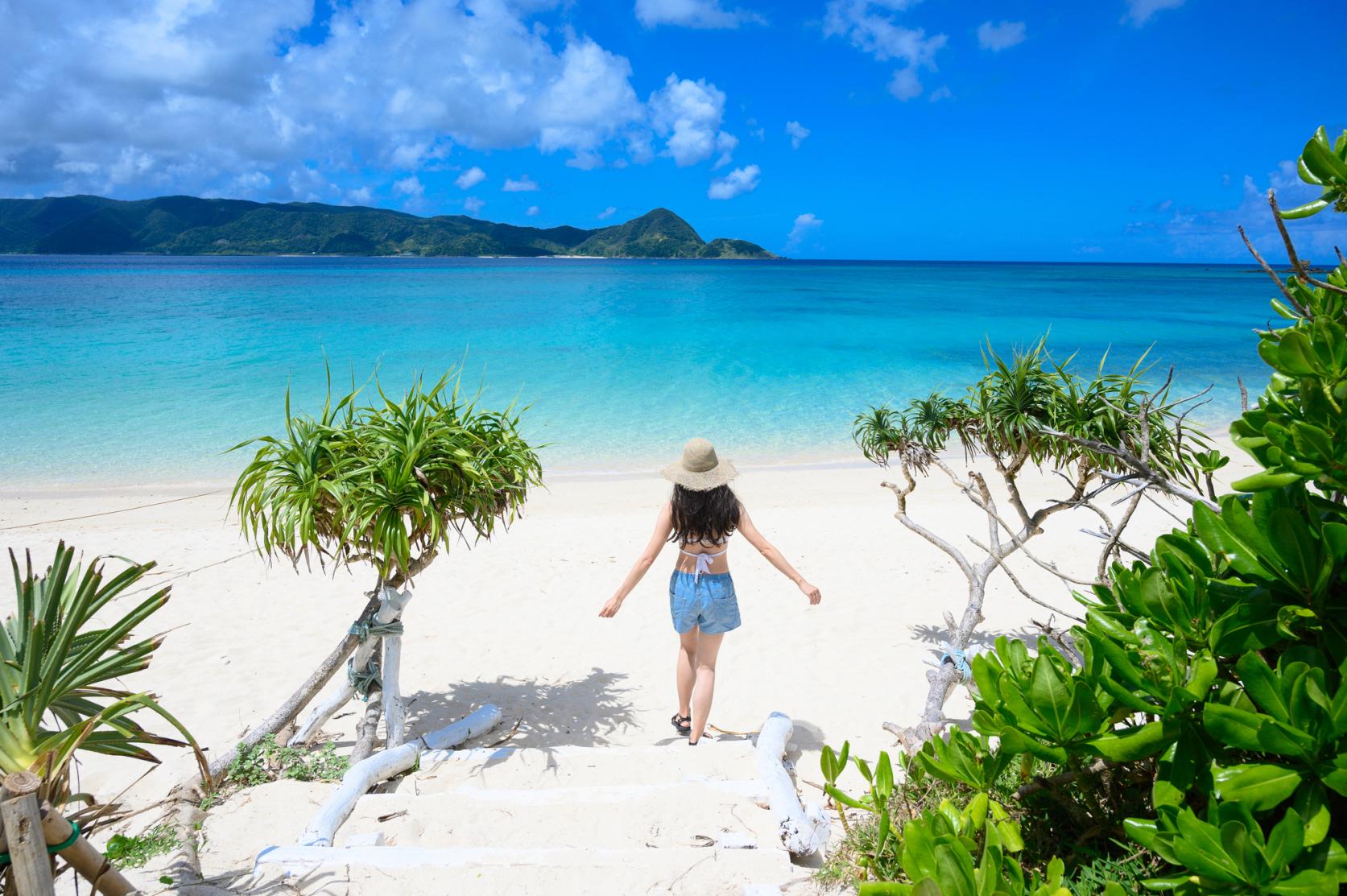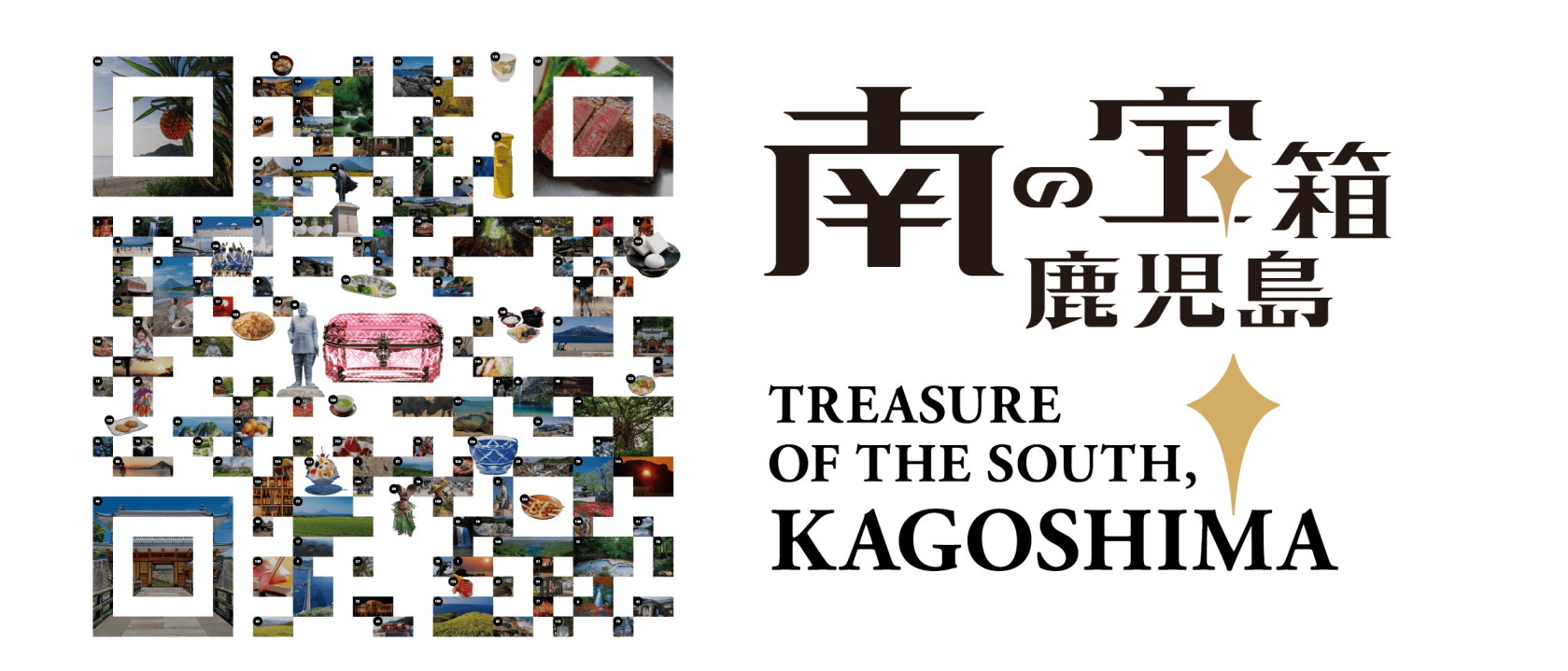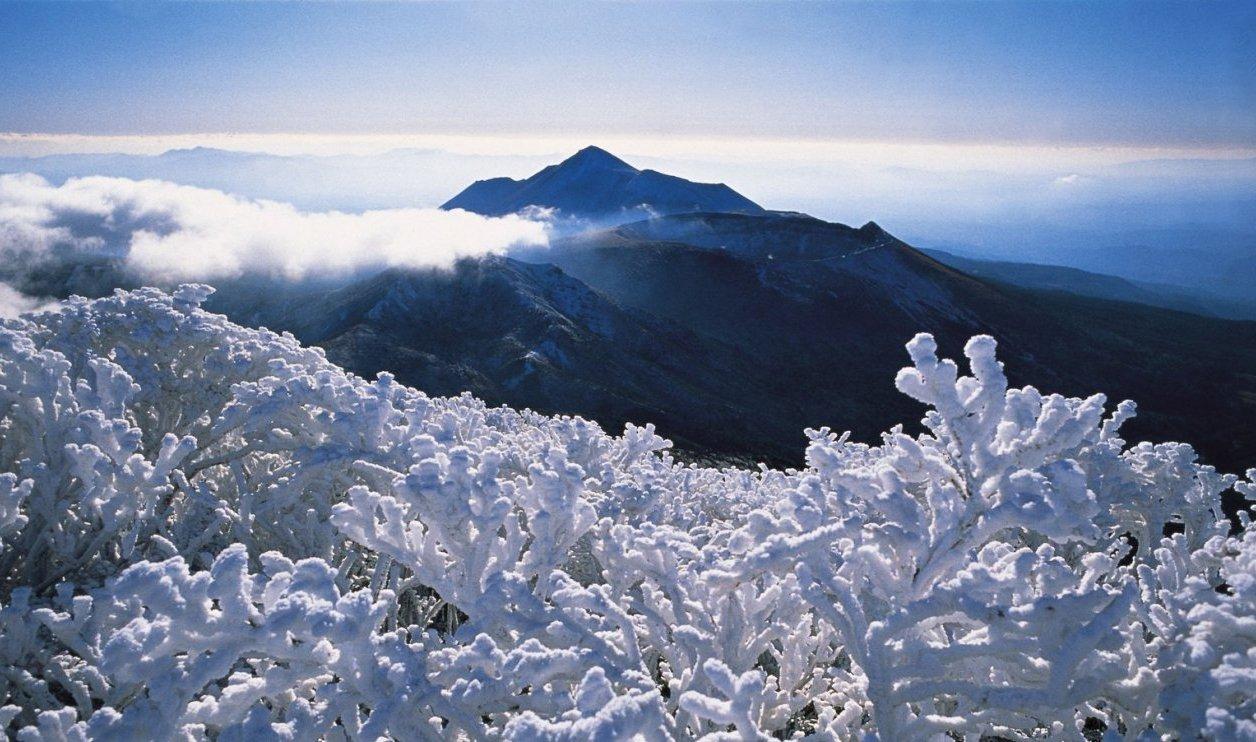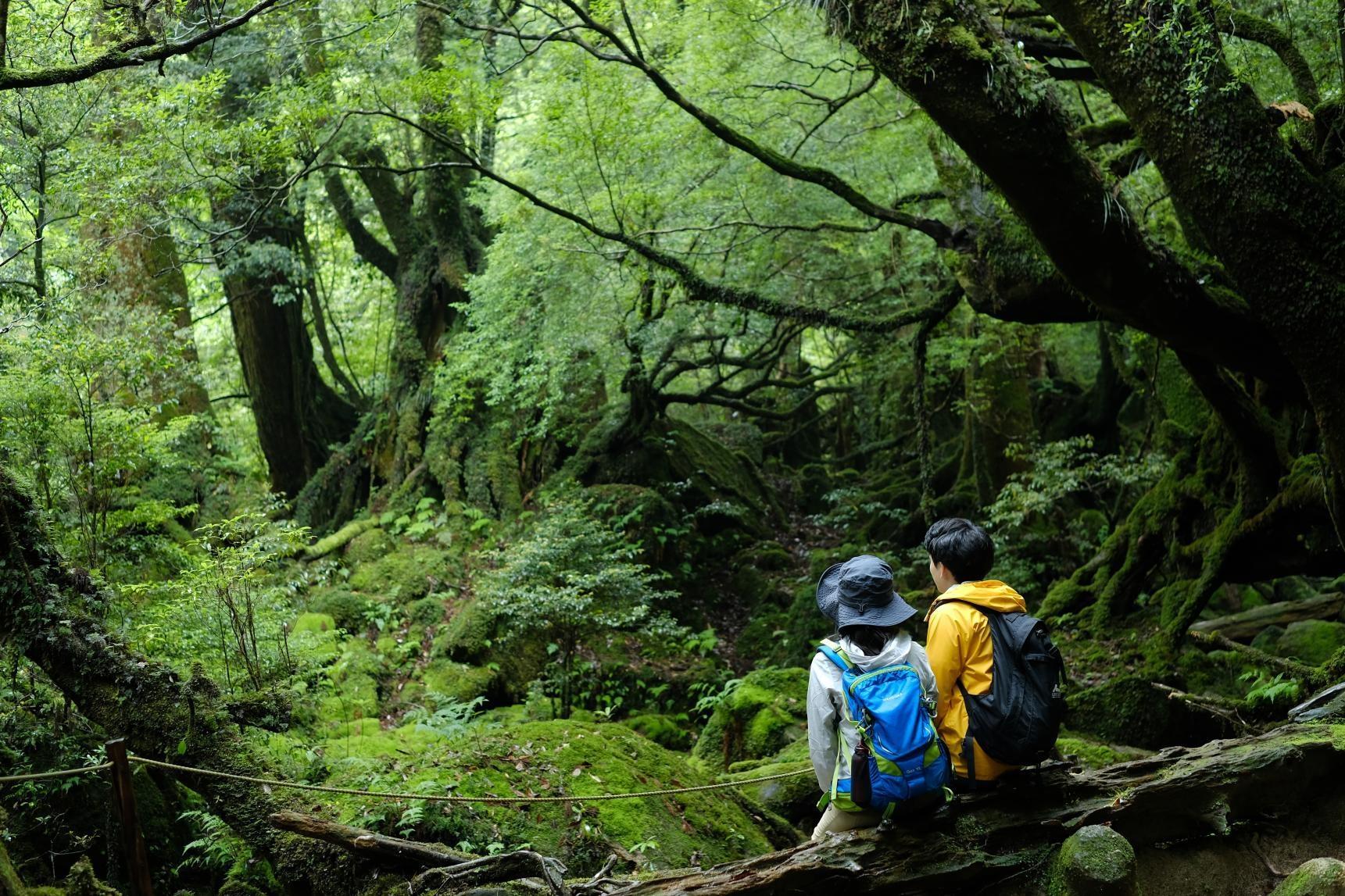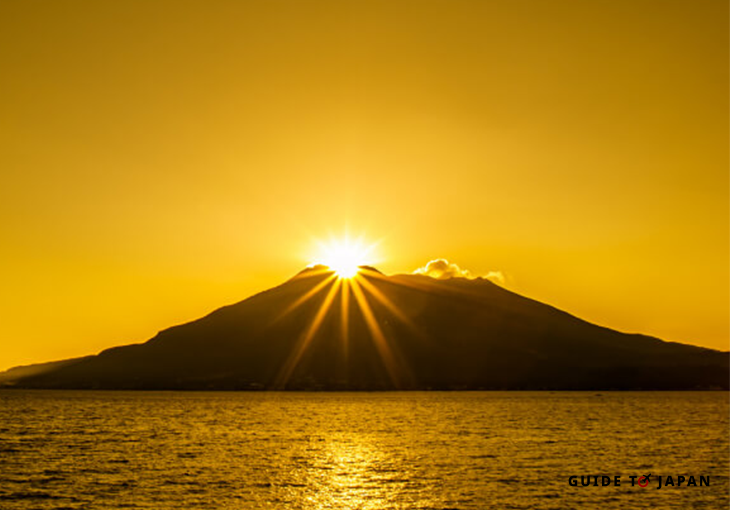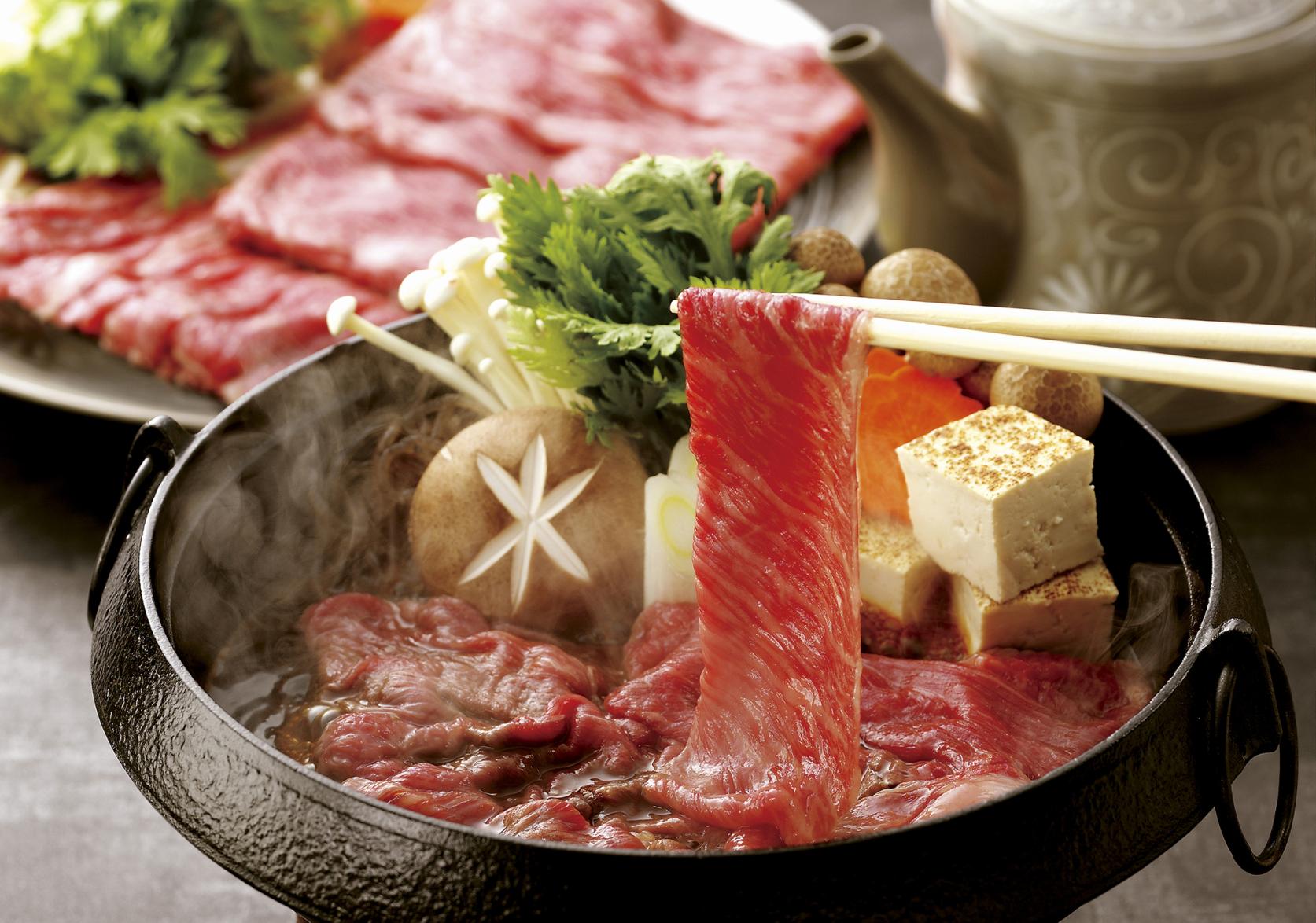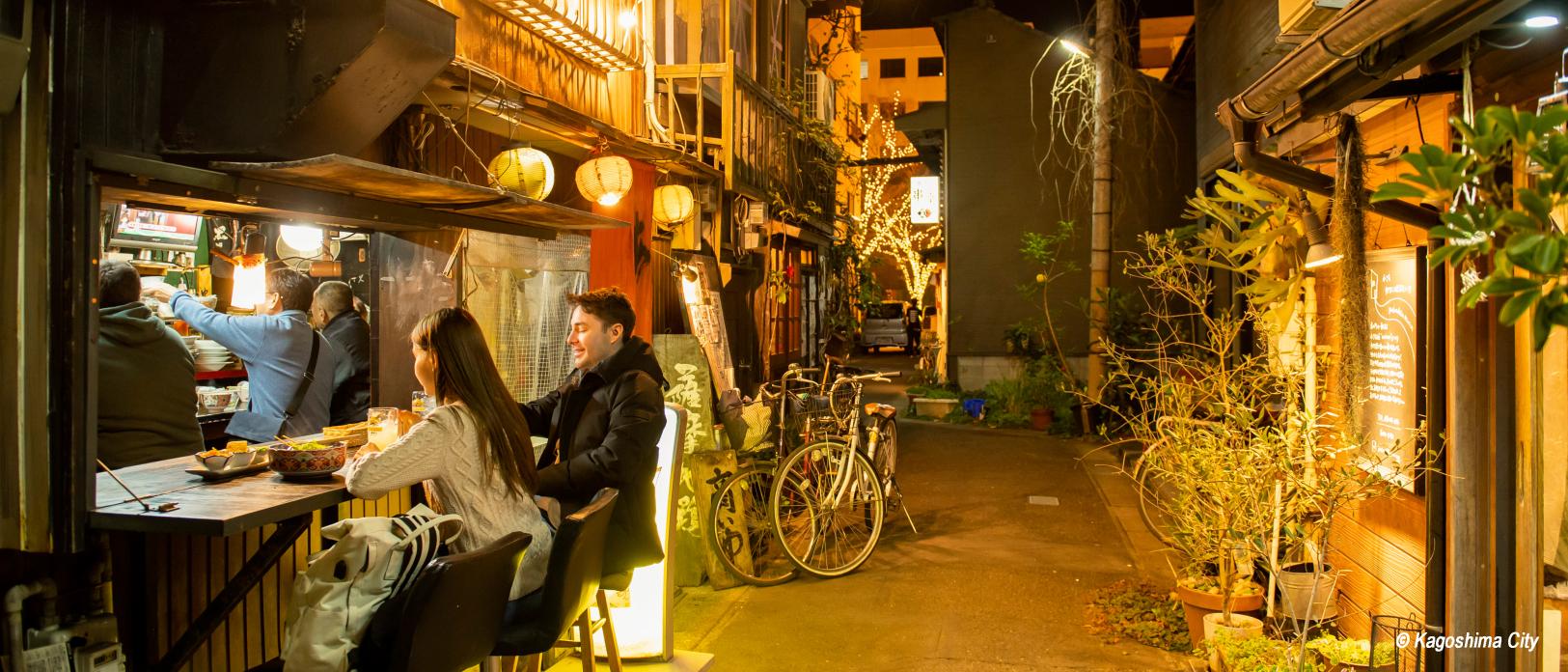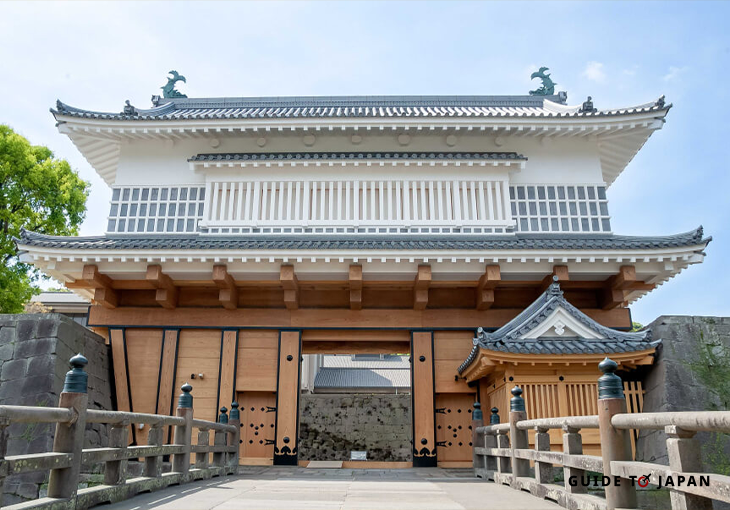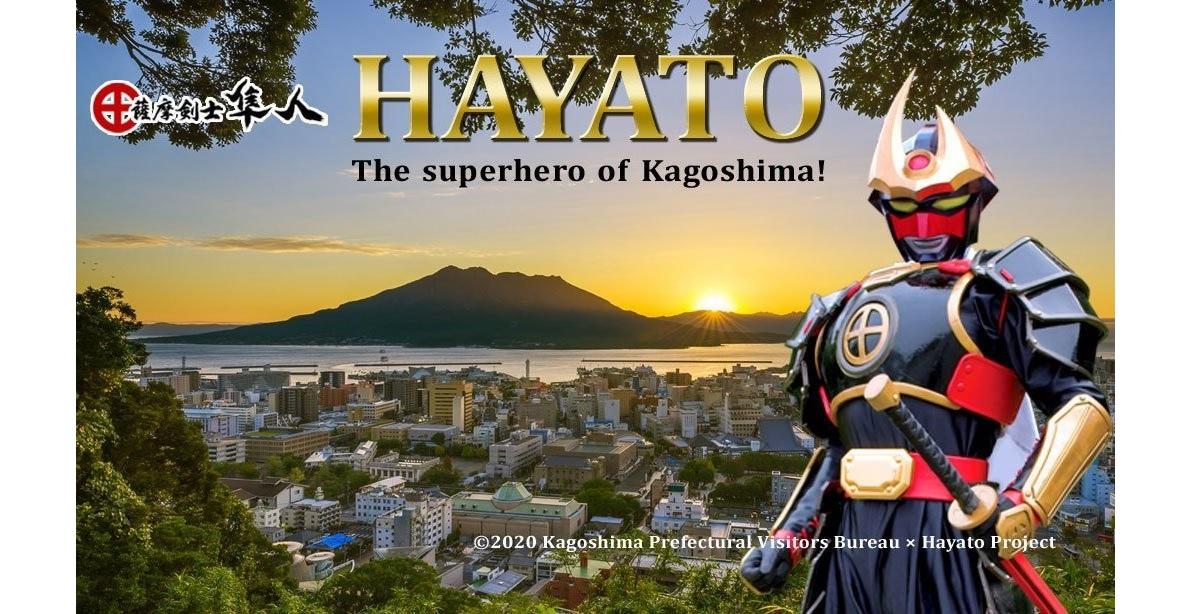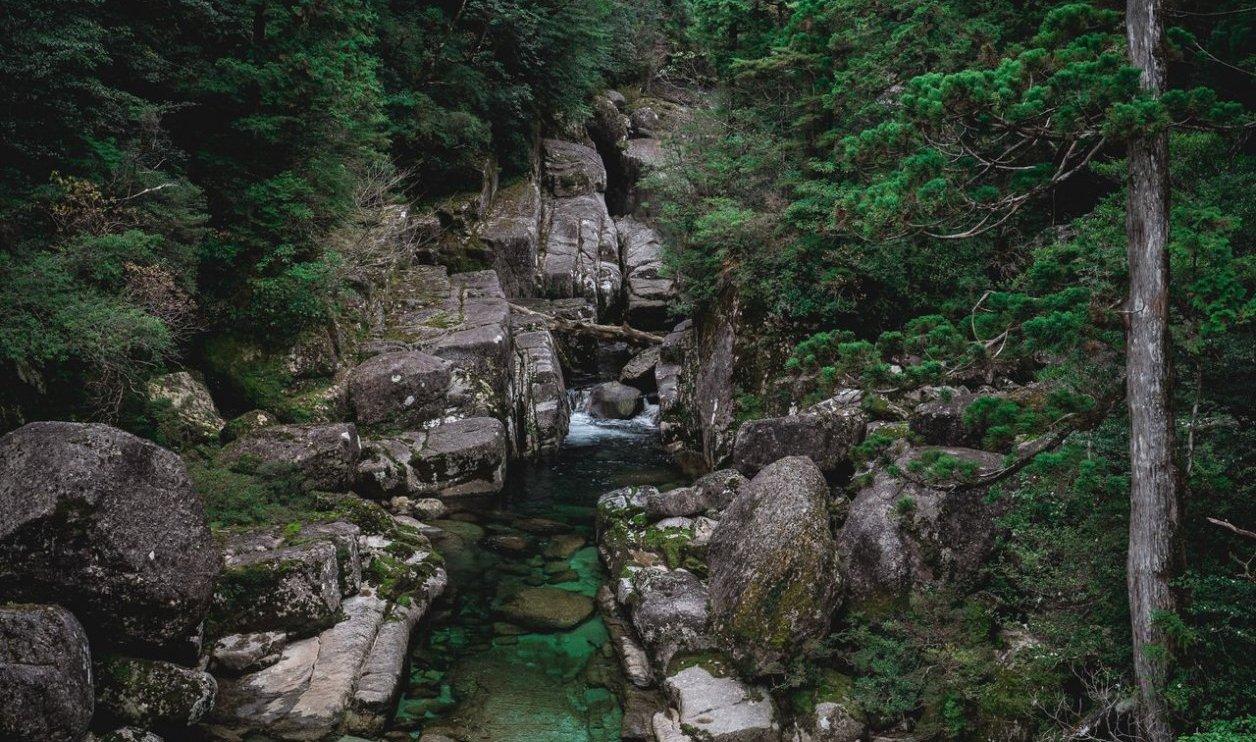Fired up about bullfights
Tokunoshima: home to Japan’s most intense bullfighting culture
Tokunoshima is located almost at the centre of the Amami archipelago. At 248 square meters, its population is about 26,000. The island’s main industry is agriculture, with potato and sugar cane crops that are renowned.
The only island in the prefecture where bullfighting is held, Tokunoshima hosts about 20 tournaments throughout the year. The biggest clashes, the all-island bullfighting tournaments, are held in January, May and October. They decide the yokozuna (grand champion) of all the champions. Many local people who live in other areas come home just to watch the matches.
There’s no doubt that the continuation of bullfighting on Tokunoshima for some 400 years is thanks to the passion and dedication of the local people. Though the number of people involved has gradually decreased over time, the spirit of bullfighting is being passed on to the young generation.
For most local people, interest starts in their last years of elementary school. They watch the tournaments, learn about bulls from their family and friends or even take care of a bull themselves. The integration of bullfighting in every part of their lives fosters the interest even more.
Warming up the crowd
The tournaments are held throughout the island in its seven bullrings, which are about 20 metres in diameter. Around the ring is a variety of seating. Much like in sumo, the seats at the front are the best and most expensive.
After an opening ceremony, the matches begin. Bulls are pulled into the ring, accompanied by their seko, as attendants lead the way, spraying salt and shouting, “Waido! Waido!”, a traditional local chant to warm up the crowd. People wearing happi (festival-style coats) blow trumpets and beat on drums while spectators cheer.
The number of seko on the island is estimated to be around 100, of which about 10 are veteran participants. Seko lock the bulls’ horns and pat the back of their bull while shouting out “Haine! Haine!” (“OK, now go!”). They also shout “Hii ya” (OK, push!), “Tsukka mon!” (Thrust your horns!) and “Keh ram!” (Hook the horns and push!).
The winner is decided when one bull runs away. Then supporters of the winning bull and seko pour into the ring wearing their team colours. They whistle, dance, scream and throw confetti.
After the final match for the all-island title, most spectators stay long behind, praising the bull and owner.
Fiercely fought competitions
During matches, the bulls make noises and rub their faces on the sand to mark their territory. They glare before smashing into each other as the thuds echo around the ring and sand flies into the air.
Some matches finish in less than a minute but others go on for as much as 20 minutes.
Even a storm won’t stop the holding of the bullfighting tournaments. Local people have a strong, determined spirit and do bullfighting, come rain or shine. Even in wet, muddy conditions, the bulls and seko carry on while spectators wear raincoats or hold umbrellas, undeterred.
Local traditions
On the day before each tournament, local people involved in bullfighting get together for mae iwai, a celebration to pray for the success of the participating bull. The owner hosts a party and his friends and family bring gifts.
People enjoy a huge range of food and drink. Party rooms are decorated with towels and posters emblazoned with the name of the bull. People tell stories about their love of bulls and encounters with bullfighting.
On the day of the tournament, an important ceremony takes place in cowsheds. Sake and salt are poured on the horns of each bull before the competition. Then, a file and sandpaper are carefully used to polish and sharpen the horns, before sake and salt are again rubbed in. The bull’s body is brushed carefully. These practices are carried out to care for the bull and pray for his safe return.
Caring for the bulls
Owning and taking care of a bull can be an economic burden but, with the support of the entire community, it is still popular. Bull ownership and bull fighting bring people together in a shared social activity, building community spirit and ties between friends, family, colleagues and neighbours.
Seko are looked up to with admiration and bull ownership is something that most young children aspire to or take part in. Some junior and high school students take care of a bull every day. Their lives revolve around the bull: feeding it, cleaning up after it, taking it for a walk, and never missing its daily brushing. Usually each teenager is fully in charge of one bull, which involves a lot of work, but their passion runs deep. On rainy days, when walks are not possible, they visit other cowsheds to check out other bulls.
Owners also take their bulls by car to Kedokubama, a beach where the bulls can train or relax. It is thought that walking on the sand is good training and less likely to cause injury than walking on concrete. The sea, meanwhile, disinfects the bulls’ nails. Some owners lead the bull for about an hour and even pour sand over the bull’s entire body to make it comfortable.
Steeped in history
Tokunoshima’s Nakusami Kan houses an exhibition full of pictures, charts, cards and other items that introduce the bullfighting of Tokunoshima. There are photos of past all-island champions as well as easy-to-understand explanations of the rules and practices of bullfighting.
The exhibition also shows how bullfighting fits into the island’s culture and introduces other parts of island life, including folklore and performing arts.
Nearby is the Kamezu Bullring, which is referred to as the sacred ground of bullfighting in Tokunoshima. Though not in use, it is a significant spot in the history of bullfighting.
Islanders say that, whether they win or lose, they become hooked on bullfighting after their first match. On this small island, friendships blossom and are deepened through bullfighting.
Recommended Spots
-
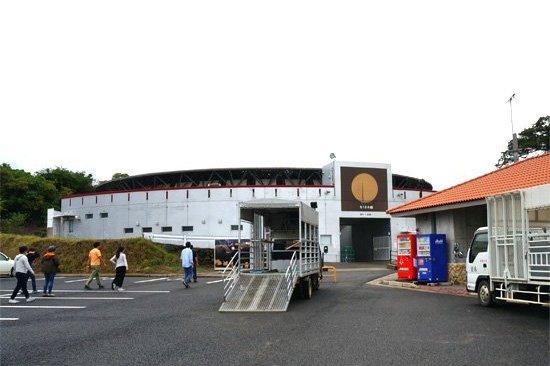
Tokunoshima Nakusami Kan (Bullfighting materials museum)
An exhibition room of materials showing bullfighting history and culture in an easy to understand manner.
-
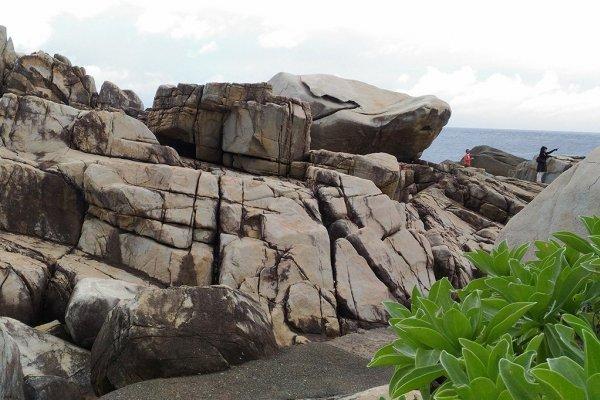
Mushiroze
Mushiroze is a coastal area formed from granite, which is rarely found in these southern regions.
The area got its name because of the way the massive smooth stone streaching across the scene looks like a woven grass mat has been laid out.
-
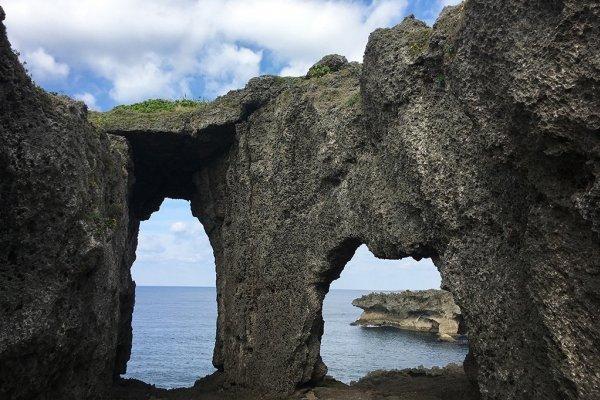
In-no-joufuta
Innojofuta is a mysterious rock formed from a protruding coral reef that was weathered over the years by seasonal winds and rough waves.
This is also called 'Megane Iwa' (Spectacles Rock) because of its caracteristic shape. Many people visit this location to view the beautiful sunset through these spectacles. -
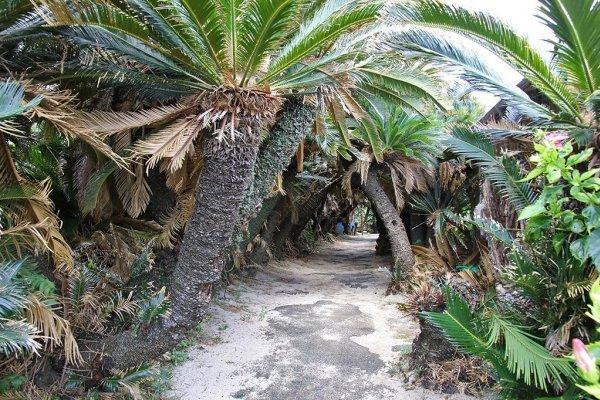
Kanamizaki Sotetsu (Cape Kanami Sago Palm Tunnel)
It is a tunnel like arch of many Sago palm trees that goes on for about 200 meters.
There is an observatory past the tunnel and from there you can see the Tonbura Rocks, the mecca of fishing and diving. You can also see as far as the main Amami Oshima Island.
Around the end of the rainy season, you can find hermit crabs laying eggs on the nearby beach on the nights of the new moon.
Other related information
Most popular
-
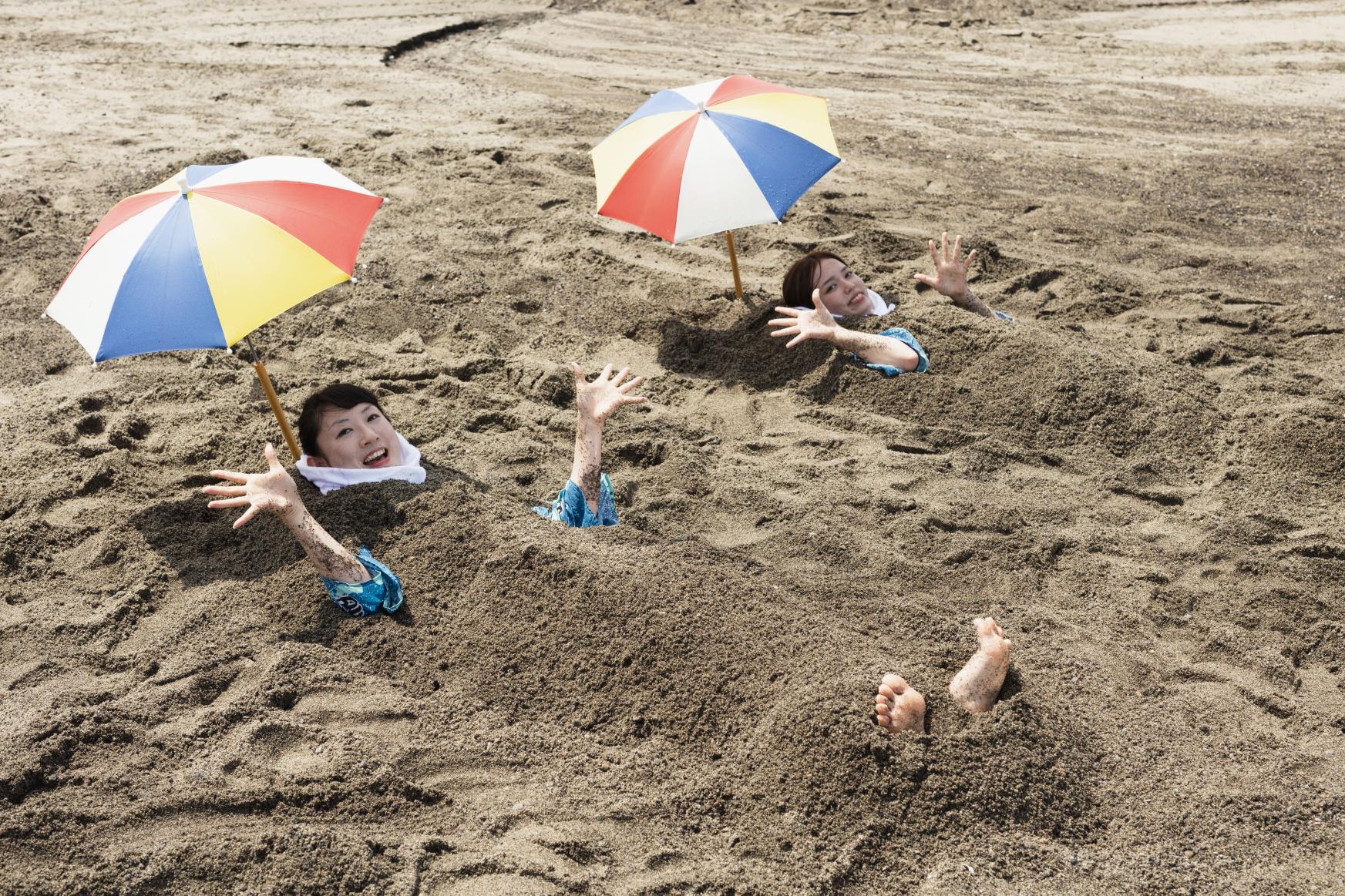
Steam Sand Baths
-
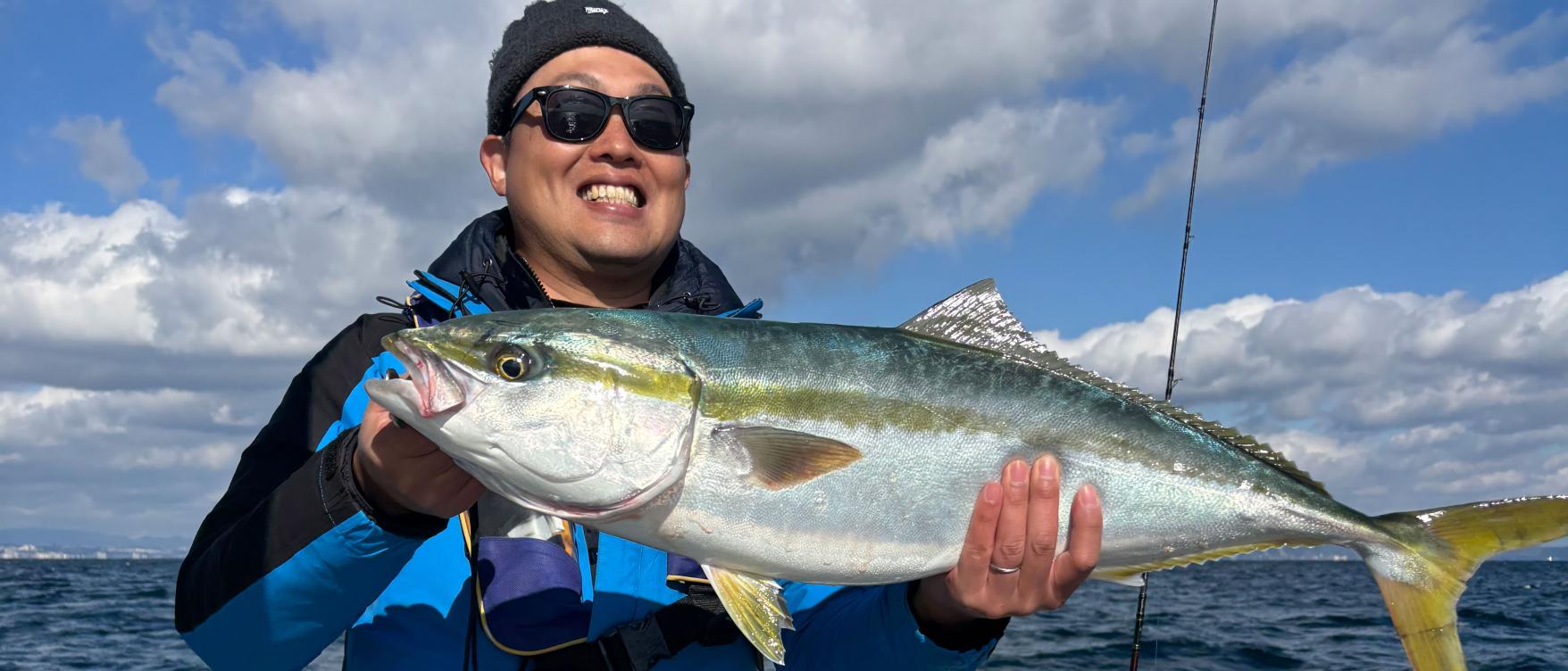
Enjoy a great fishing experience in Kagoshima's Kinko Bay!
-
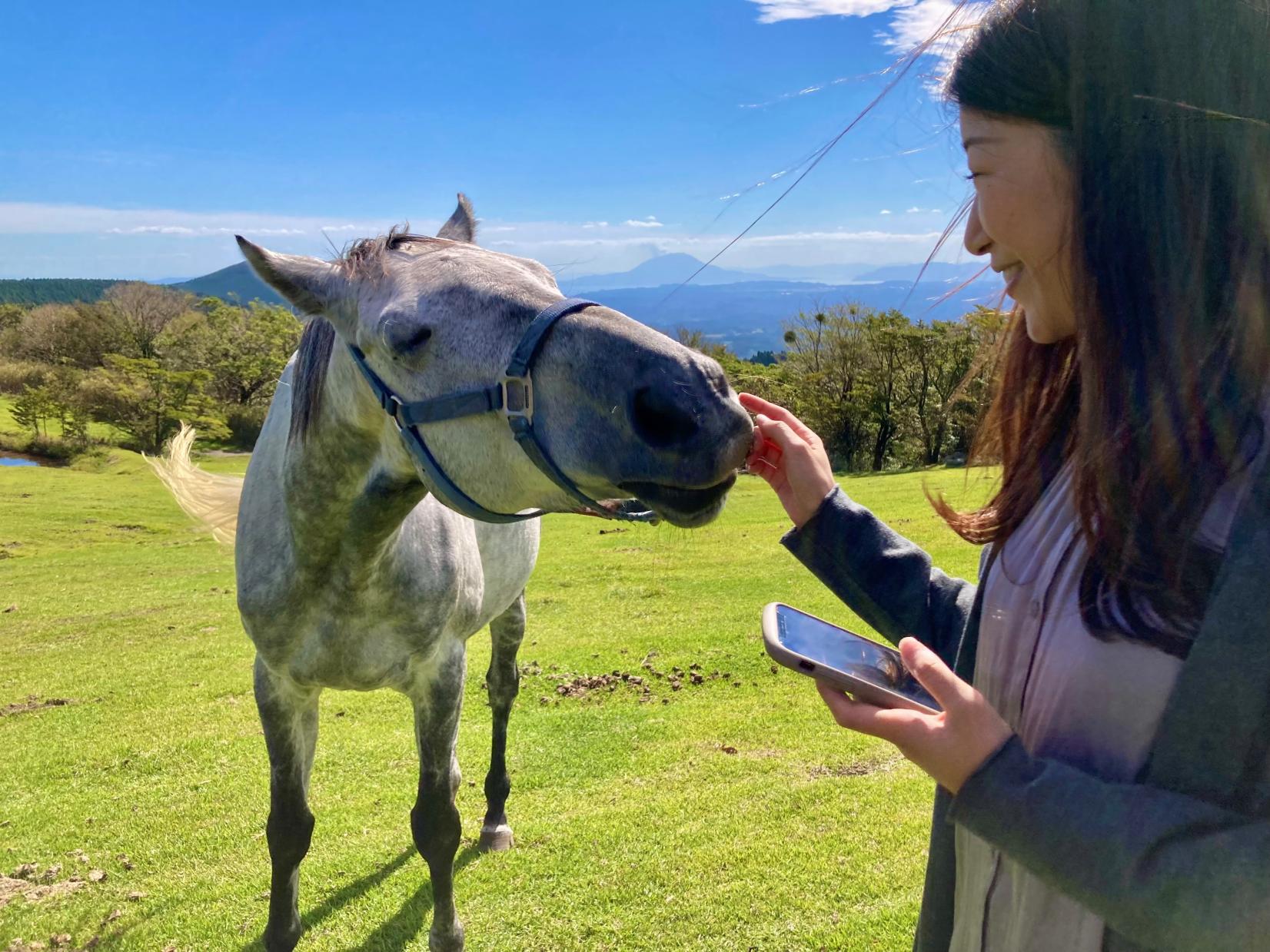
Re-Wild Kagoshima: The ultimate healing experience of interacting with the “Happy Horses”
-

Now is the time for a bike trip! Cycle beautiful Kagoshima
-
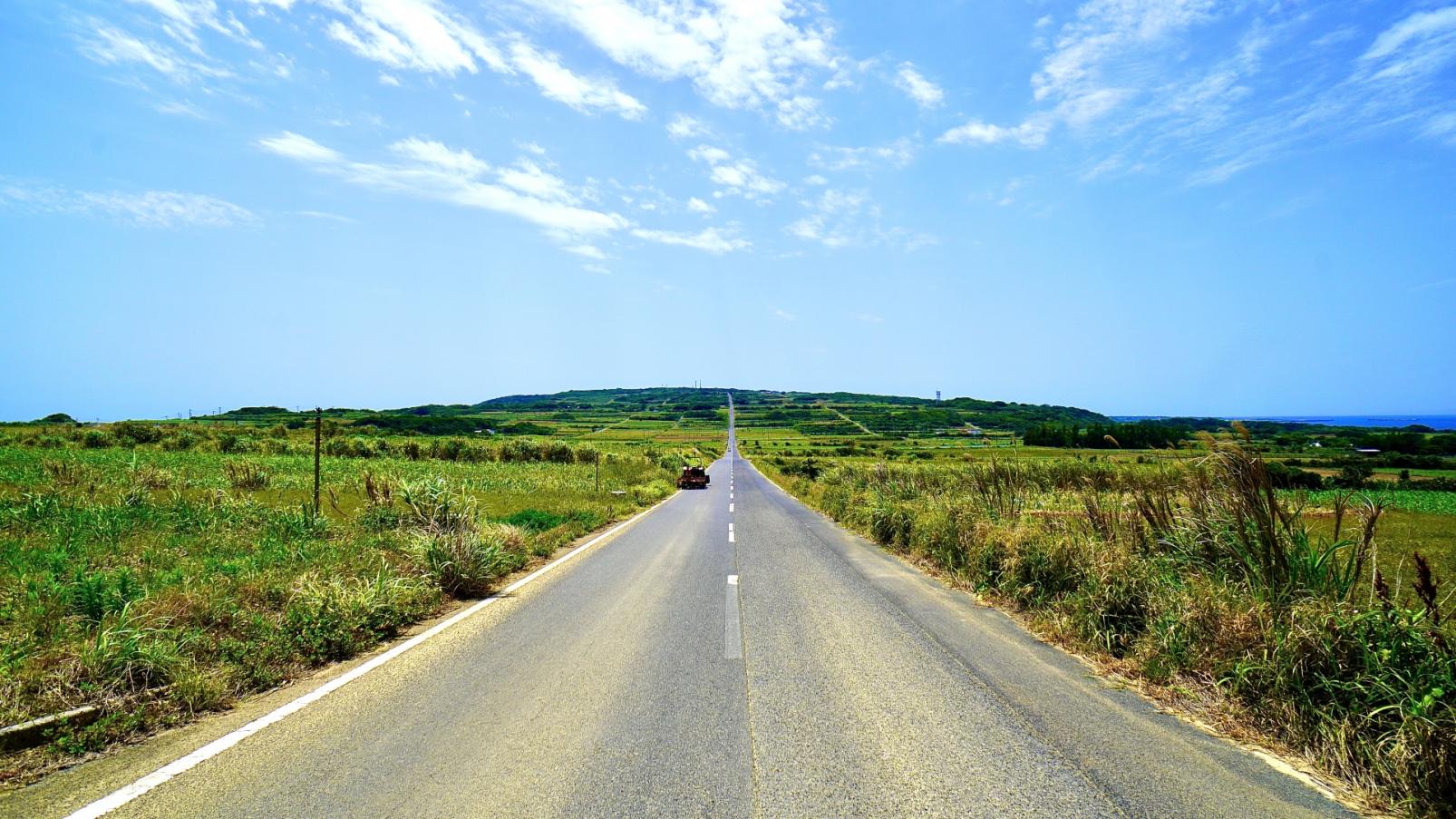
Kikaijima Course, an island where mysterious giant banyan trees and butterflies dance



